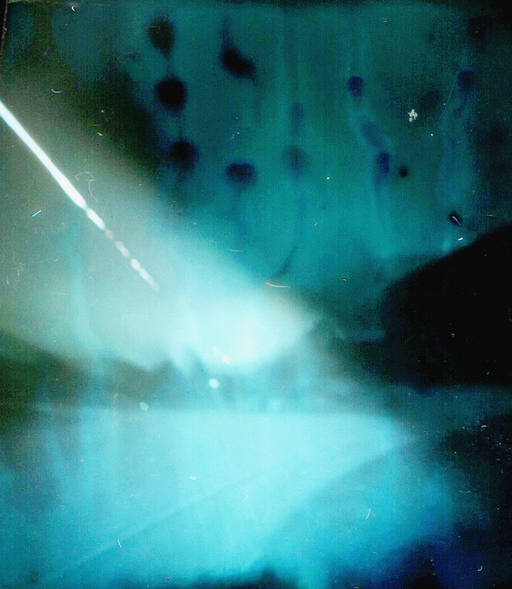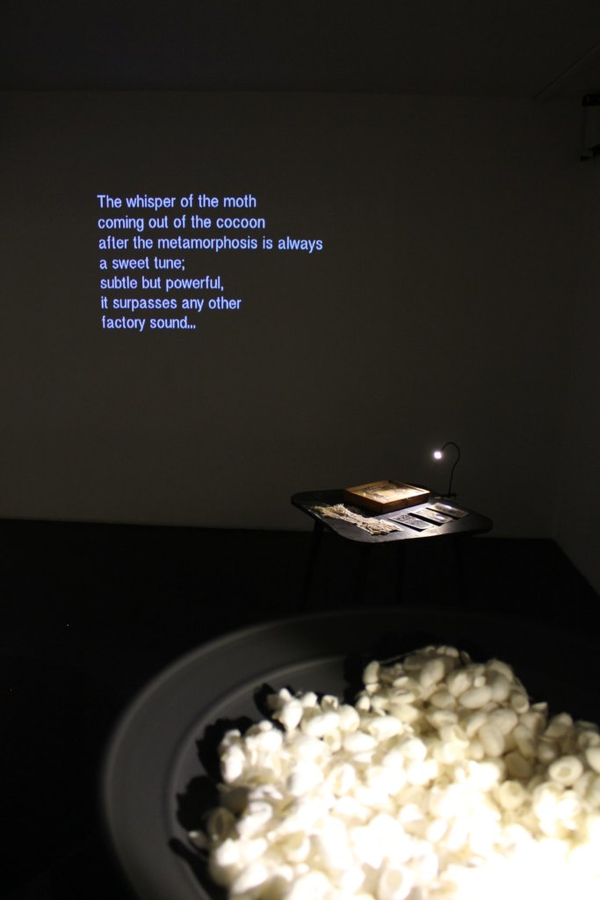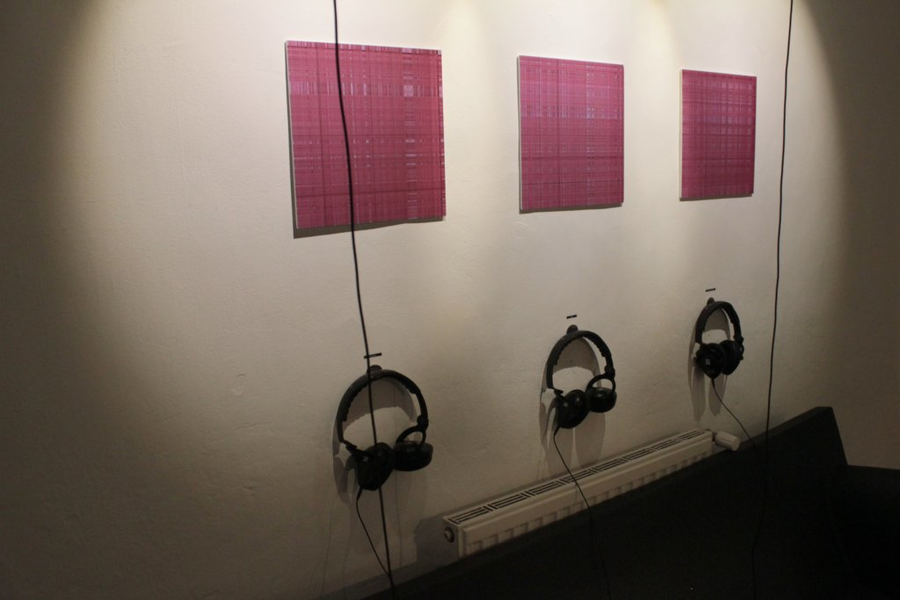References
- Bishop, Claire (2012). Artificial Hells: Participatory Art and the Politics of Spectatorship. London: Verso.
- Bourriaud, Nicolas [1998] (2002). Relational Aesthetics. Trans. by Simon Pleasance and Fronza Woods. Dijon: Les presses du réel.
- Foucault, Michel [1967] (1986). “Of Other Spaces”. Trans. by Jay Miskowiec. In: Diacritics 16.1, pp. 22–27. doi: 10.2307/464648 .
- Glissant, Édouard [1990] (1997). Poetics of Relation. Trans. by Betsy Wing. Ann Arbor, MI: University of Michigan Press.
- Haraway, Donna J. (2016). Staying with the Trouble: Making Kin in the Chthulucene. Durham and London: Duke University Press.
- Latour, Bruno (1993). We have never been modern. Trans. by Catherine Porter. Cambridge, MA: Harvard University Press.
- Margulis, Lynn (1990). “Words as battle cries: symbiogenesis and the new field of endocytobiology”. In: BioScience 40.9, pp. 673–677. doi: 10.2307/1311435 .
- Nancy, Jean-Luc (2000). Being Singular Plural. Trans. by Robert D. Richardson and Anne E. O’Byrne. Stanford: Stanford University Press.
- Smiers, Joost (2011). “No Copyright and no Cultural Conglomerates: New Opportunities for Artists”. In: The Routledge Companion to Research in the Arts. Ed. by Michael Biggs and Henrik Karlsson. Abingdon and New York: Routledge, pp. 388–404.
- Stengers, Isabelle (2011). “Relaying a War Machine?” In: The Guattari Effect. Ed. by Éric Alliez and Andrew Goffey. London: Continuum, pp. 134–155.
- — (2017). “Autonomy and the Intrusion of Gaia”. In: South Atlantic Quarterly 116.2, pp. 381–400. doi: 10.1215/00382876-3829467 .
- Stengers, Isabelle and Vinciane Despret (2014). Women who make a fuss: The unfaithful daughters of Virginia Woolf. Trans. by April Knutson. Minneapolis, MN: Univocal Publishing.
- Taylor, Alan (2016). “‘Collaboration’ in Contemporary Music: A Theoretical View”. In: Contemporary Music Review 35.6, pp. 562–578. doi: 10.1080/07494467.2016.1288316 .
- Winkler, Franz-Günter (2008). “Systems and Observers from a Holistic Viewpoint”. In: Simultaneity: Temporal Structures and Observer Perspectives. Ed. by Susie Vrobel, Otto E. Rössler and Terry Marks-Tarlow. Singapore: World Scientific, pp. 47–61.
- Zattra, Laura (2018). “Symmetrical Collaborations. Jonathan Harvey and his computer music designers”. In: Nuove Musiche 4, pp. 29–57.
Simultaneous Relaying as a
Transformative Mode of Artistic Research
Hanns Holger Rutz & Nayarí Castillo
Collaborative Practices
In the arts, traditionally collaboration can be found on different levels: First, in the production between functionally differentiated actors, e.g. between composers and musicians (cf. Taylor, 2016), or between composers/artists and engineers or technologists. Even though sometimes described as symmetrical (e.g. Zattra, 2018), and the same actor may shift between different roles, the roles are not equal. Second, as a question of authorship in the aesthetic result, in collaborations between artists and their audience, often as an attempt to diminish the gap between the two. Historical trajectories range from blurring the distinction between art and life in 1960s Fluxus and earlier, to the social turn in art in the 1990s, reflected in relational aesthetics (Bourriaud, 2002) or under the umbrella term of participatory art (Bishop, 2012). And third, different artists coming together on equal footing, in the performing arts perhaps through improvisation, as longer term artist collectives or duos, or by sharing knowledge in the process, e.g. in a fab lab or makerspace, or within an artistic residency, without the goal of a compound aesthetic product. In artistic research projects, we find many examples for these levels; often technologies are given the role of mediators, in some cases working environments are addressed.
We do not seek to extend the research on participatory art, but on collaborative work as a form of research between artists. Prior work of the authors includes Sublim (2016), Mäanderungen (2017–2019), and Iterations (2017–2020). Sublim is a project by the Daily Rhythms Collective (Castillo et al.), where all pieces were products of group developments; during a residency, the artists used the gallery space as laboratory, producing collective pieces in-situ. Mäanderungen is a generative radio piece and installation collectively conceived by a group of four artists (Castillo, Rutz et al.). Based on strange strategies of mapping the city in sound, image, and word, a major component was an algorithmic generator assembling the collected materials as audio pieces. An installation version was shown in festival Steirischer Herbst 2018. Iterations is an EU funded project on the future of artistic collaboration in digitally networked contexts, using residencies to explore ways of art co-production. It is described in depth in this exposition as one of the case studies. Focus of Iterations was the handover, a situation or experience where a delegation of one collective residency delivers part of the results to the next (Castillo worked as artist-researcher).
Handing over or sharing a tool or technique developed by artists participating in a collaborative process has been an element both of Iterations as well as the artistic research project Algorithms that Matter (Almat). We learned that it is unrealistic for someone to “relocate” their knowledge and be productive in a short amount of time. Tools and techniques are not impersonal stable components, otherwise one would deal with design and engineering questions rather than with aesthetic-epistemic questions. The extimate relation means the things are bound to particular personal investments and embodiments of particular long-term practices. Without them, tools and techniques may be difficult to access or outright useless.
A crucial aspect is thus how contact between participants of a collaborative process can be understood and facilitated. One can simply suggest that any aesthetic artefact should be in the public domain, arguing for the obligation that one’s work may be “touched by others” in disregard of the “integrity of the work” (Smiers, 2011). On the other end, if one accepts that an aesthetic proposition can never be fully detangled from those who made it, one can posit against “this reductive transparency, a force of opacity” that protects diversity (Glissant, 1997, p. 62). Donna Haraway and Isabelle Stengers shift the focus from the one who offers to the one who receives, condensed in the term response-ability as the capacity to respond (Haraway, 2016, p. 78). Stengers captures this in the idea of making a relay, which in order to adapt to new givens and unknowns—the relocation—must “induce a transformation” (Stengers and Despret, 2014, p. 47). This is an augmentation, where the shifted concern is “liable to be shared with those who arouse it, liable to add new dimensions” to the issue (Stengers, 2017, p. 396). Relaying is an experimental practice that implies a freedom—“Your perceptions are yours, or rather are yours to work with” (Stengers, 2011, p. 135)—which is not randomness but becoming part of what Stengers calls an inter-assemblage.
Introduction
Today’s situation can be characterised as the result of growing entanglement, simultaneity and proximity within a networked world. At the same time, global instabilities demand new practices of sharing responsibilities. While the data economy stresses the need to interface, to connect, to make compatible, as artists-researchers we look for a new mode of working-together and thinking-with that resists becoming compatible. Individuals should take a respectful and careful distance to one another, and develop a common movement that results in artefacts and propositions that reflect this work process and can coexist in a simultaneous aesthetic experience.
The idea of simultaneously relaying as the foundation of a new type of collaborative practice in artistic research for us is captured by the combination of a transformative practice of relaying as described by Isabelle Stengers, and a singularly plural conception of being devised by Jean-Luc Nancy. Relaying then is not seen as a succession of states, as a temporal transition from one to the other, but as suspended in a space of simultaneity, as an ongoing circulation.
Simultaneity
Simultaneity as a fundamental condition of contemporary society has been described as the copresence of otherwise unconnected temporalities, a juxtaposition “of the near and far, of the side-by-side, of the dispersed” (Foucault, 1986, p. 22) or a spillage from one domain into the other, as networks become “simultaneously real, like nature, narrated, like discourse, and collective, like society” (Latour, 1993, p. 6). Simultaneity has been an aspect of many aesthetic expressions, from on-canvas “spatialisation” of movement in Futurist painting or on-stage simultaneist poetry of Dadaism, to the mixture of environmental sound with composed sound in a Max Neuhaus piece or the narrative space of polyphonic voices traversed by the visitor to Susan Hiller’s Witness. These examples of installation art point to the movement of the audience as an active element. It emphasises the togetherness-in-independence that is always in the reception of an artwork—the person encountering the work creates meaning from the intersection of the presence of the piece’s propositions and their past experiences and memories which become co-present, and no causality or primacy of one over the other is involved.
Are there instances where simultaneity is reflected not only in the result but also in the artistic work process itself? What interests us is the two-tier appearance of simultaneity, first in the artistic process, and suspended from it in the resulting propositions. Rudimentary forms of this appearance can be found in our previous work, including Chain Reaction (2016) and swarming + networking (2017). Chain Reaction is a series of interventions in public space. The group of five artists (Castillo, Rutz et al.) shared a gallery/workspace while exploring and creating aesthetic elements across the town, each on their own or in smaller groups. We were curious in what the others were doing, but there was no direct interference. An example of two elements created simultaneously were an analogue pinhole camera series and a digital exposure process using a peculiar “development” algorithm. Each existed in their own individuality, but they shared interest in a way of observing that was never verbally exchanged. In swarming + networking the group consisted of three artists (Castillo, Grossegger, Rutz). Over several months, we met to exchange thoughts and sketches. An intensive working retreat advanced the development. It was again an open-ended process, practising acts of relaying, e.g. text fragments becoming material for an algorithmic process, ideas being transcribed into different media. If we were to preserve the otherness and autonomy of each artist, we could still come together in a holobiontic relationship, using a concept that denotes the formation of a new individual from very different bionts, by recognising each other, merging and eventually dissociating again (Margulis, 1990). This relationship can be regarded generally as the simultaneous containment of the whole structure within each part (cf. Winkler, 2008).
Collaborative development of the aims and questions for the artistic research project Simultaneous Arrivals (Nayarí Castillo, Hanns Holger Rutz, 2020 ; FWF AR 714).
Simultaneously developed artefacts in Chain Reaction (Nayarí Castillo, Sara Gonzáles Novi, Hanns Holger Rutz Tuuli Sundén, Inka Ylikotila, 2016). Left is an analogue photography by Tuuli, right a digital photography by Hanns Holger.
Collaborative exhibition Writing Machines (Nayarí Castillo, Hanns Holger Rutz, 2012) – there are individual niches, where communication happens across space, but also pieces in which elements of both artists come together (the mirrors in Voice Trap reflecting the brown paper piezo speakers on the ceiling; sound and visual components forming an ensemble) or are even exchanged (Nayarí making a sound composition for Hanns Holger’s red transducer-glass panels).









